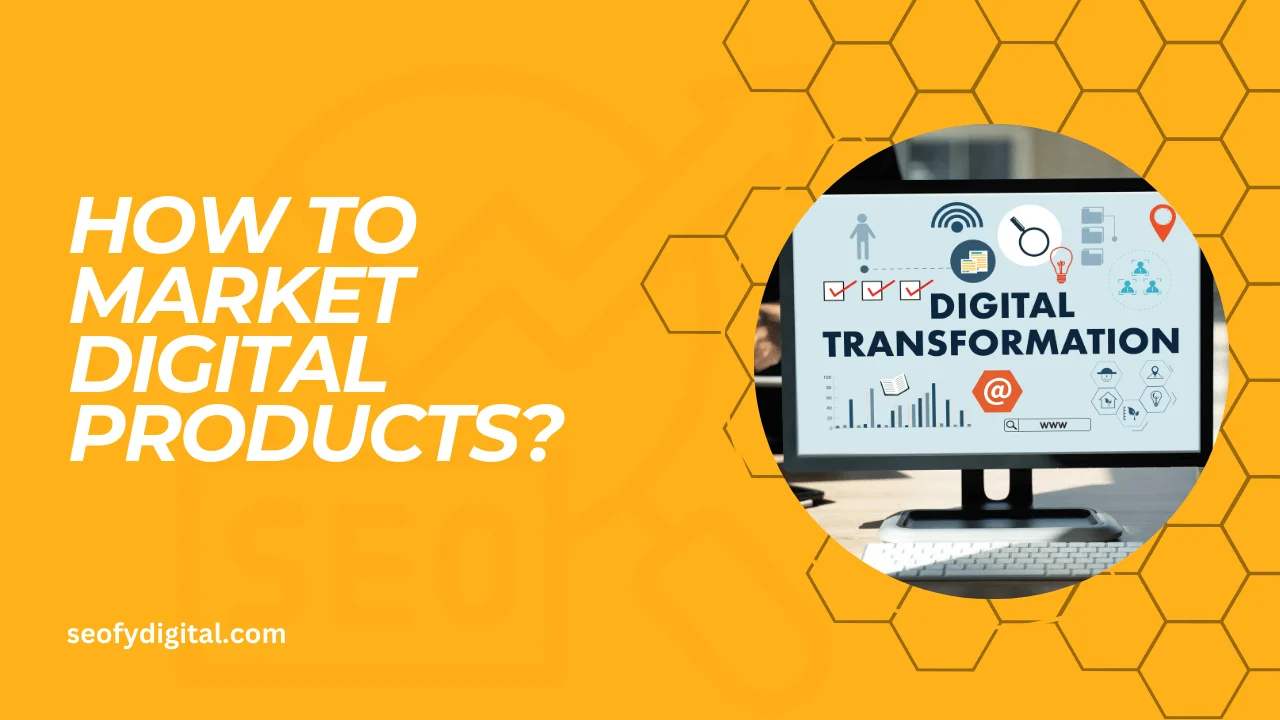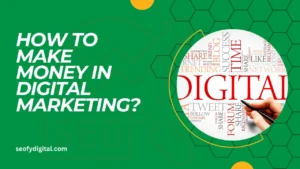Imagine pouring your heart and soul into crafting a digital product – an ebook brimming with valuable insights, an online course packed with actionable steps, or a software tool that streamlines workflows.
You’re confident it can transform lives, but there’s a nagging question lingering: How do you get your masterpiece into the hands of the people who need it most?
Welcome to the often-overlooked yet crucial aspect of the digital product journey – marketing. While creating a stellar product is essential, getting it noticed in a crowded online space is a game-changer.
This blog post is your roadmap to success, a deep dive into the strategies you need to effectively market your digital product and turn it from a hidden gem into a sought-after solution. So, buckle up and get ready to unlock the secrets of attracting the right audience, building buzz, and ultimately, turning your passion project into a thriving business!
Contents
- 1 Understanding Your Target Audience
- 2 Building a Strong Brand
- 3 Content Marketing
- 4 Social Media Marketing
- 5 Email Marketing
- 6 Conclusion
- 7 FAQ’s
- 7.0.1 How can I identify my target audience for a digital product?
- 7.0.2 What are some effective strategies for pricing digital products?
- 7.0.3 How can I create high-quality digital products?
- 7.0.4 What are some effective channels to promote digital products?
- 7.0.5 How can I measure the success of my digital product marketing efforts?
- 7.0.6 What are some common challenges in marketing digital products?
Understanding Your Target Audience
Before diving into marketing strategies, it’s crucial to understand your target audience. Conduct thorough market research to identify their demographics, interests, and pain points.
Create detailed buyer personas to visualize your ideal customer. This will help you tailor your marketing messages and content to their specific needs and preferences.
Map out the customer journey to identify the key touchpoints where you can engage with your audience. This will help you create a seamless customer experience and guide them towards a purchase.
Building a Strong Brand
A strong brand identity is essential for building trust and credibility. Develop a memorable logo, choose a consistent color scheme, and define your brand voice.
Brand storytelling can help you connect with your audience on an emotional level. Craft compelling narratives that highlight the benefits of your product and how it can solve their problems.
To build trust, consistently deliver high-quality content, respond promptly to customer inquiries, and fulfill your promises.
Content Marketing
Content marketing is a powerful tool for attracting and engaging your target audience. Create high-quality content such as blog posts, articles, videos, and infographics.
Optimize your content for search engines (SEO) to increase visibility and attract organic traffic. Use relevant keywords, meta descriptions, and header tags to improve your search engine rankings.
Distribute your content through various channels, including social media, email marketing, and guest posting on other websites.
Social Media Marketing

Social media platforms offer a great opportunity to connect with your audience and promote your digital products. Choose the right platforms that align with your target audience’s preferences.
Create engaging content that encourages interaction and shares. Use a mix of text, images, and videos to keep your audience interested.
Build a strong community around your brand by responding to comments and messages promptly. Encourage user-generated content and run contests to foster engagement.
Email Marketing
Building an email list is essential for effective email marketing. Use lead magnets, pop-ups, and other tactics to capture email addresses.
Craft compelling email campaigns with attention-grabbing subject lines and engaging content. Optimize your email design for mobile devices and ensure a seamless user experience.
Implement email automation to nurture leads and drive sales. Set up automated email sequences to welcome new subscribers, promote your products, and re-engage inactive subscribers.
Conclusion
Marketing digital products requires a strategic approach that combines creativity and data-driven insights.
By understanding your target audience, building a strong brand, creating high-quality content, leveraging social media, and implementing effective email marketing strategies, you can successfully promote your digital products and achieve your marketing goals.
Remember, the key to success is to continuously adapt to the ever-evolving digital landscape and stay ahead of the curve.Sources and related content
FAQ’s
How can I identify my target audience for a digital product?
Conduct thorough market research to identify your target audience’s demographics, interests, and pain points. Use tools like Google Analytics and social media insights to gather valuable data.
What are some effective strategies for pricing digital products?
Consider factors like perceived value, competition, and production costs. You can use pricing strategies like premium pricing, economy pricing, or psychological pricing.
How can I create high-quality digital products?
Focus on creating valuable content that solves a problem or fulfills a need. Use high-quality design, clear language, and a user-friendly format.
What are some effective channels to promote digital products?
Utilize a combination of channels, including social media, email marketing, content marketing, paid advertising, and affiliate marketing.
How can I measure the success of my digital product marketing efforts?
Track key metrics such as website traffic, conversion rates, customer acquisition cost (CAC), and customer lifetime value (CLTV).
What are some common challenges in marketing digital products?
Common challenges include building brand awareness, overcoming price objections, and handling customer support.








